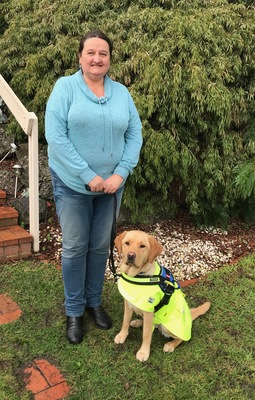A sudden inflammation of her eyes left Kim Browne’s vision to gradually decrease.
The Narre Warren woman developed Optic Neuritis in 2007, an inflammation of the optic nerve that causes blurred, grey and dim vision.
She initially hoped the condition would go away, unfortunately, that wasn’t the case.
She was declared legally blind early last year as the inflammation spread across both her eyes.
“Now my vision is somewhat like looking through a very dense flywire screen,” Kim said.
While Kim is only just beginning her journey with a Seeing Eye Dog, in this case a dog named Raya, she is excited about the possibilities that Ray will bring into her life as they journey together.
“I think Raya will give me a sense of freedom and confidence in the community, give me a chance to access it again,” she said.
“I think it’s important for people with vision loss to be able to participate and be involved in the community.”
As a part of NAIDOC Week, which celebrates the achievements and culture of Aboriginal and Torres Strait Islander people, Kim was one of three First Nations people that was given the opportunity to name one of the recent puppies born at Seeing Eye Dogs.
She chose the name “Minaaka”.
“Minaaka means ‘eye’ in the Adnyamathanha language. I thought it was a very appropriate name for a Seeing Eye Dog,” Kim said.
“It is an honour to share language with my children and as part of the Vision Australia community.”
Kim is a lecturer in Early Childhood Education for RMIT and Victorian director of the World Organisation for Early Childhood Education.







